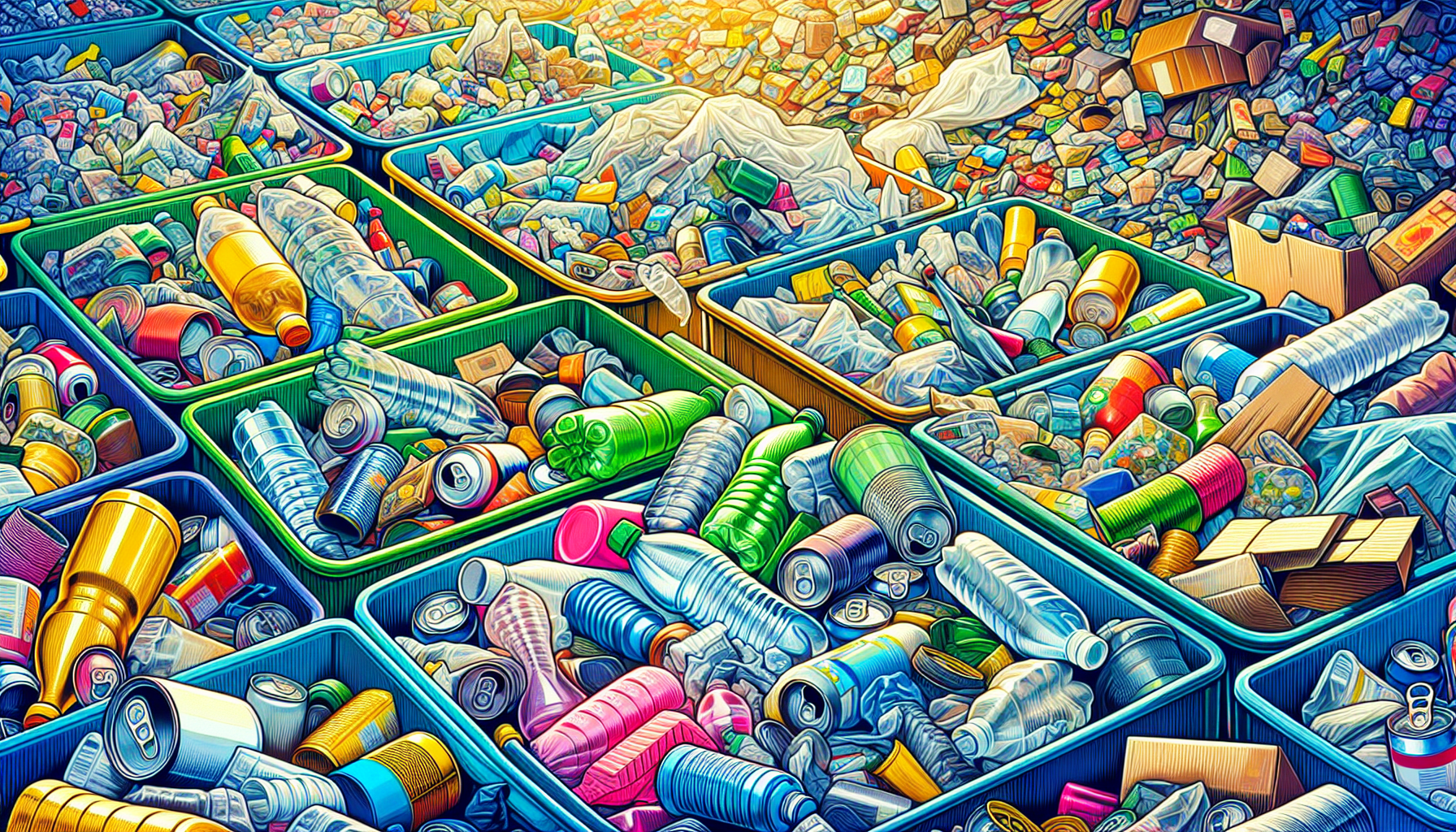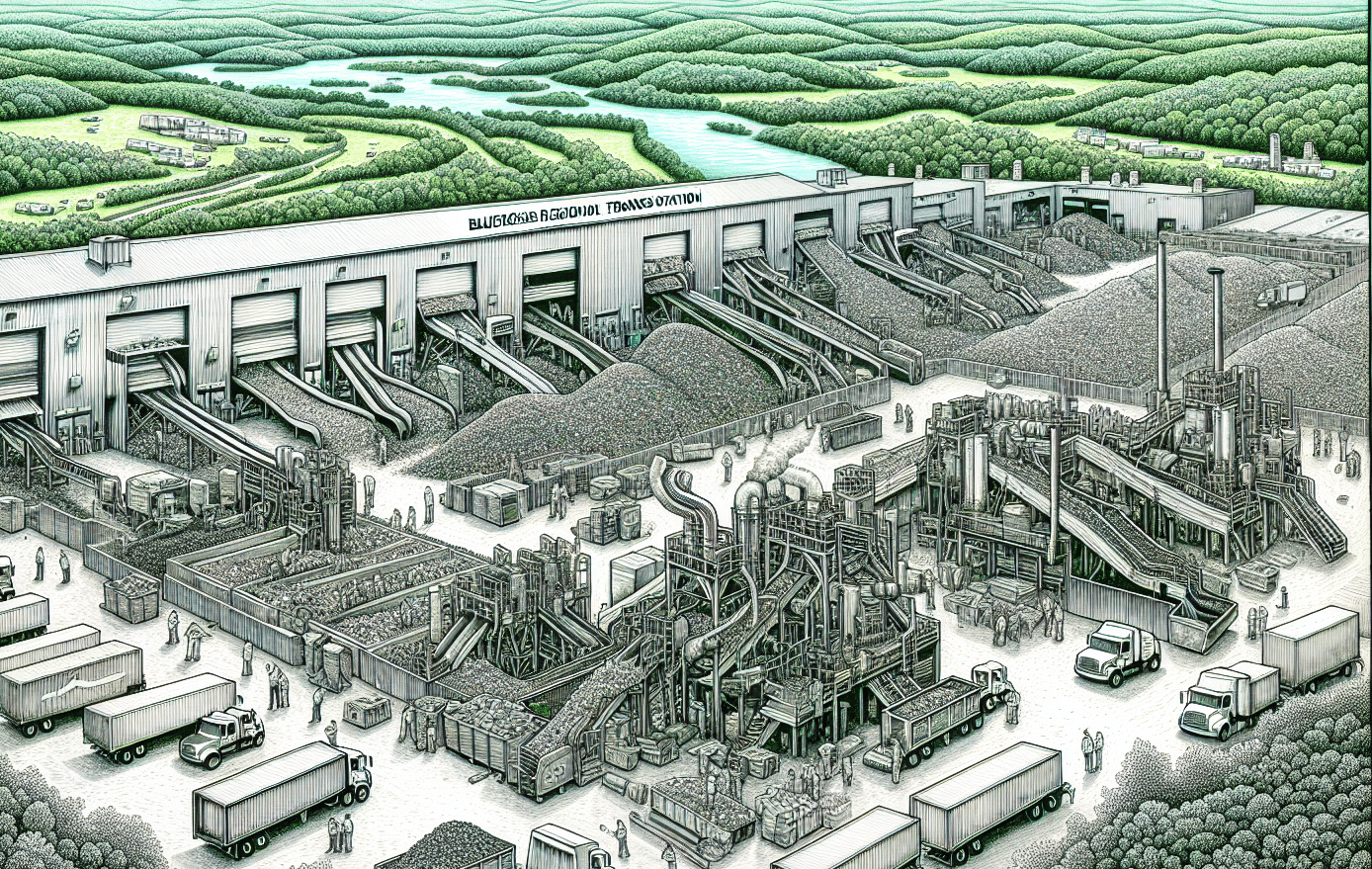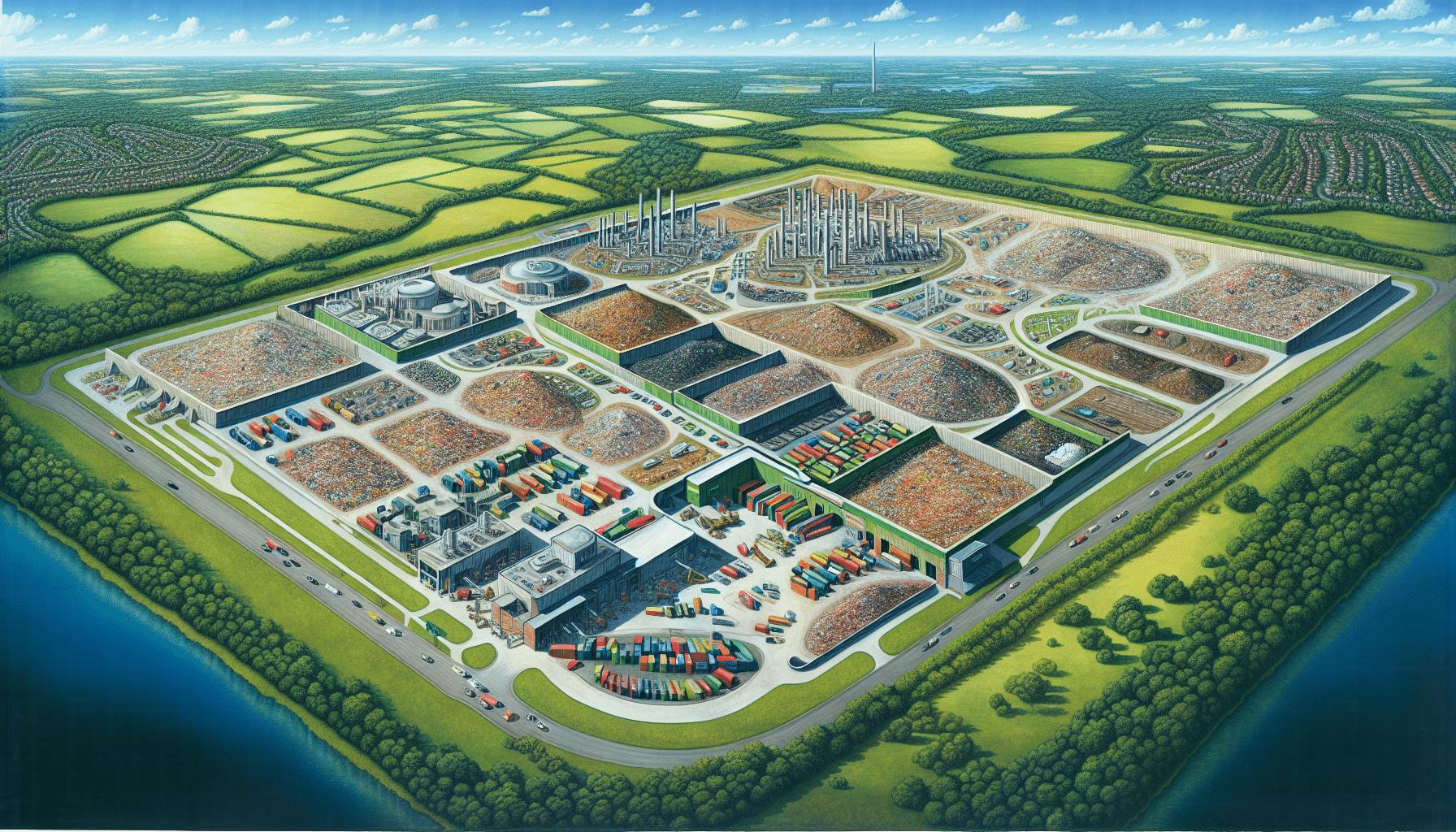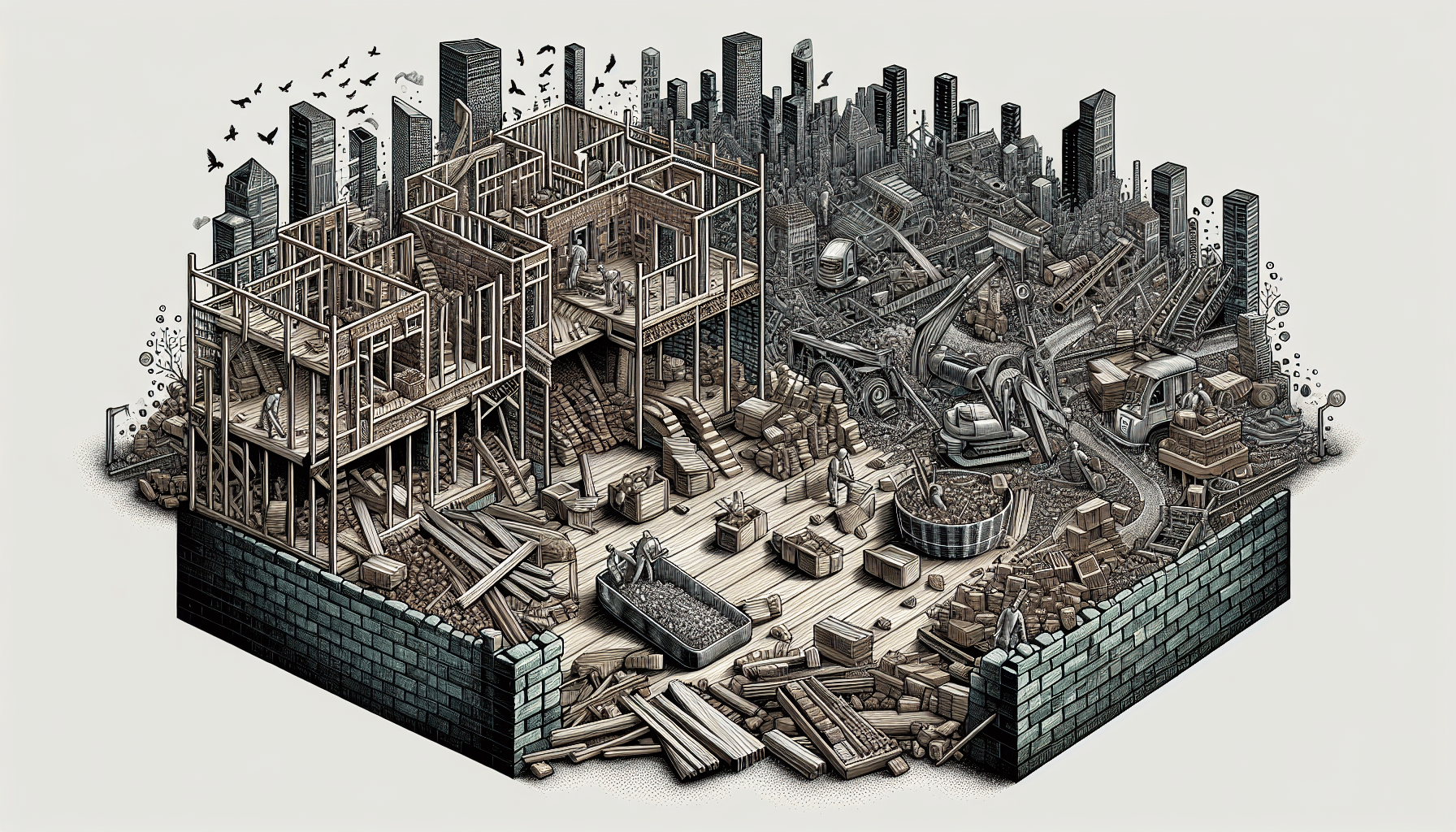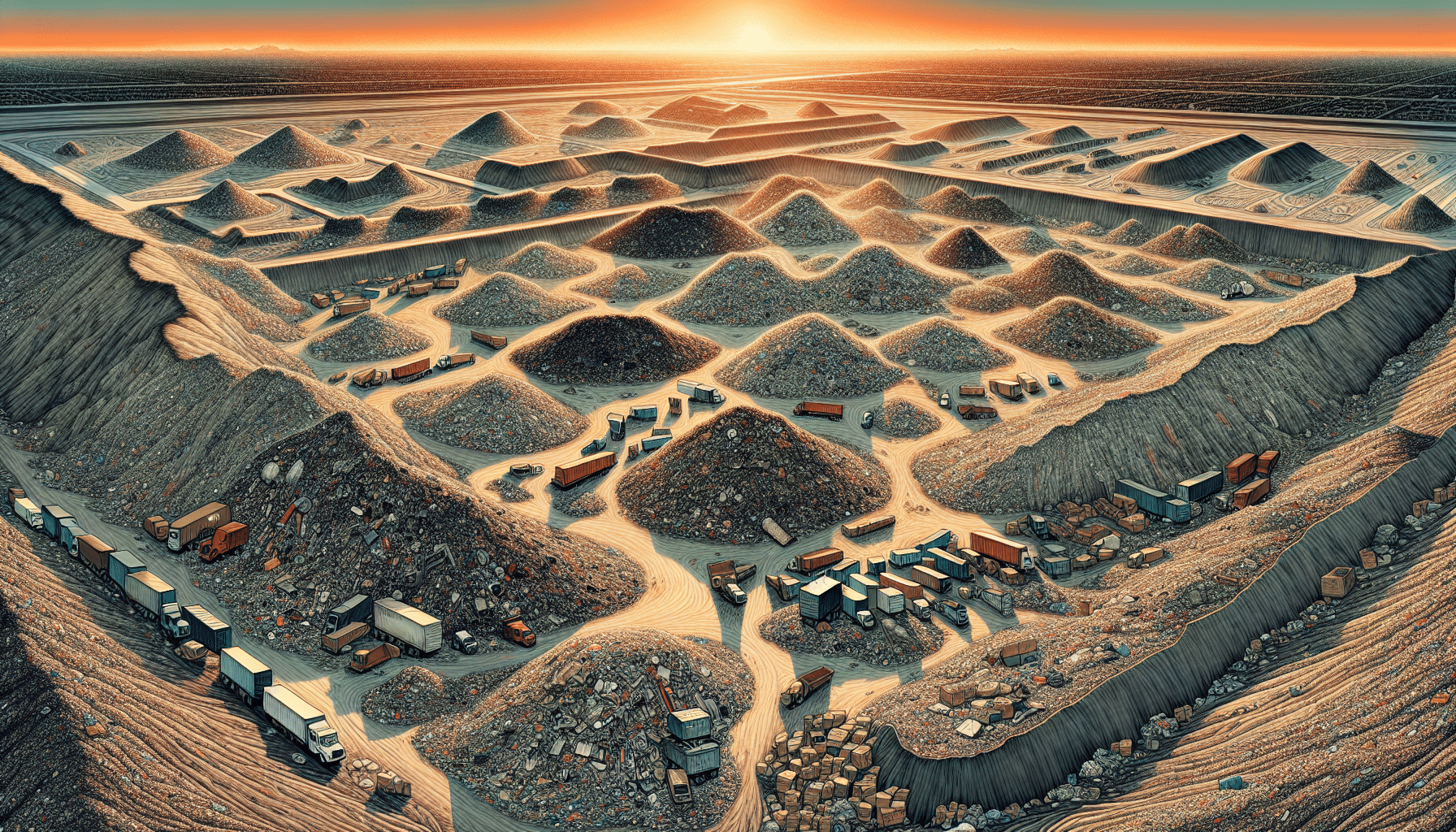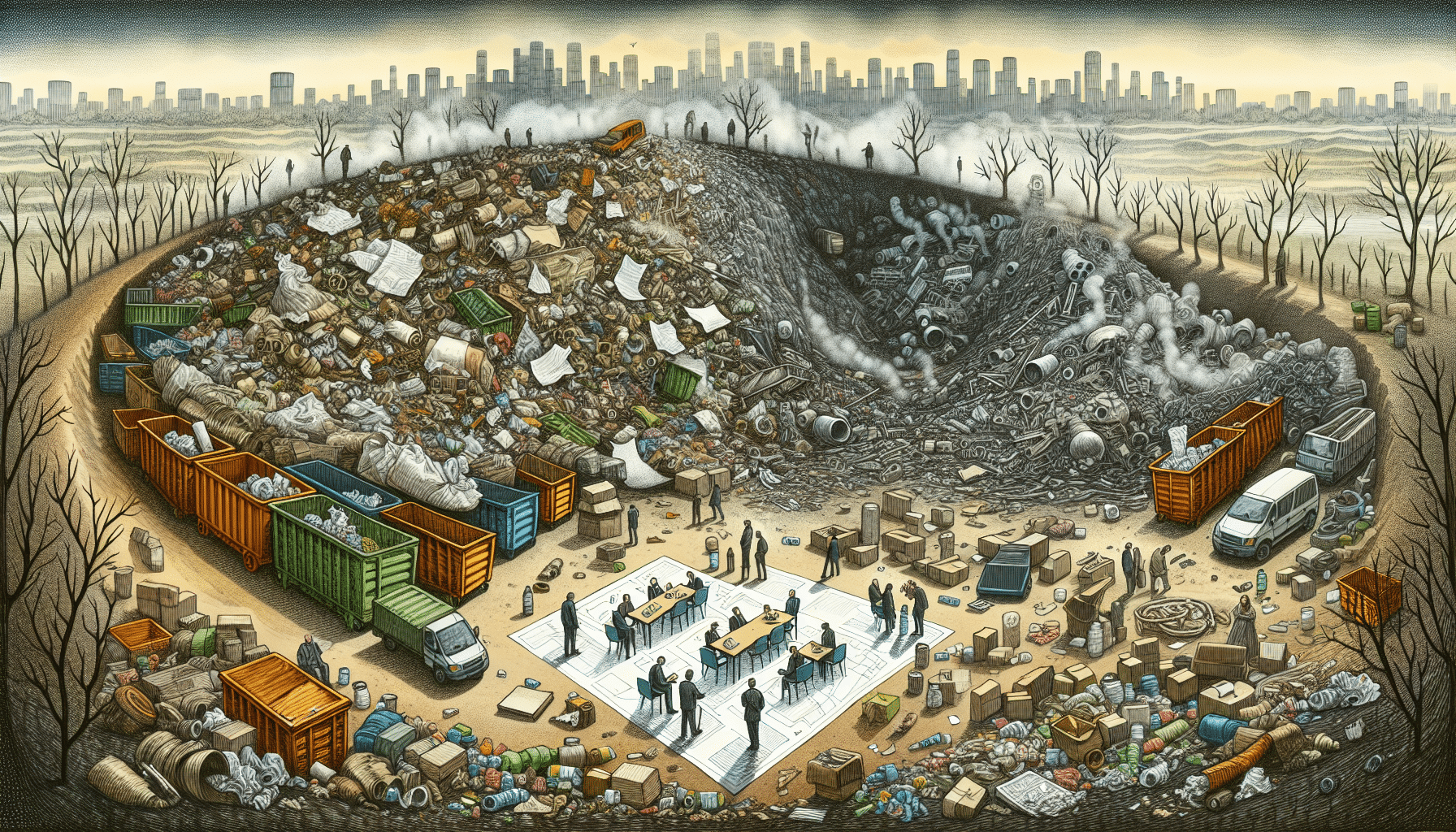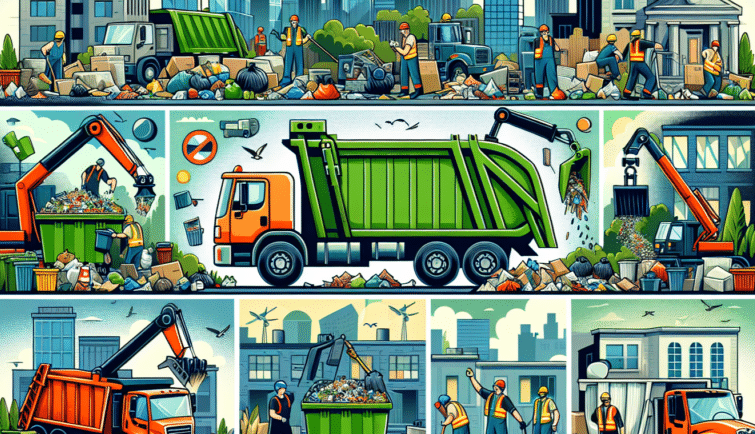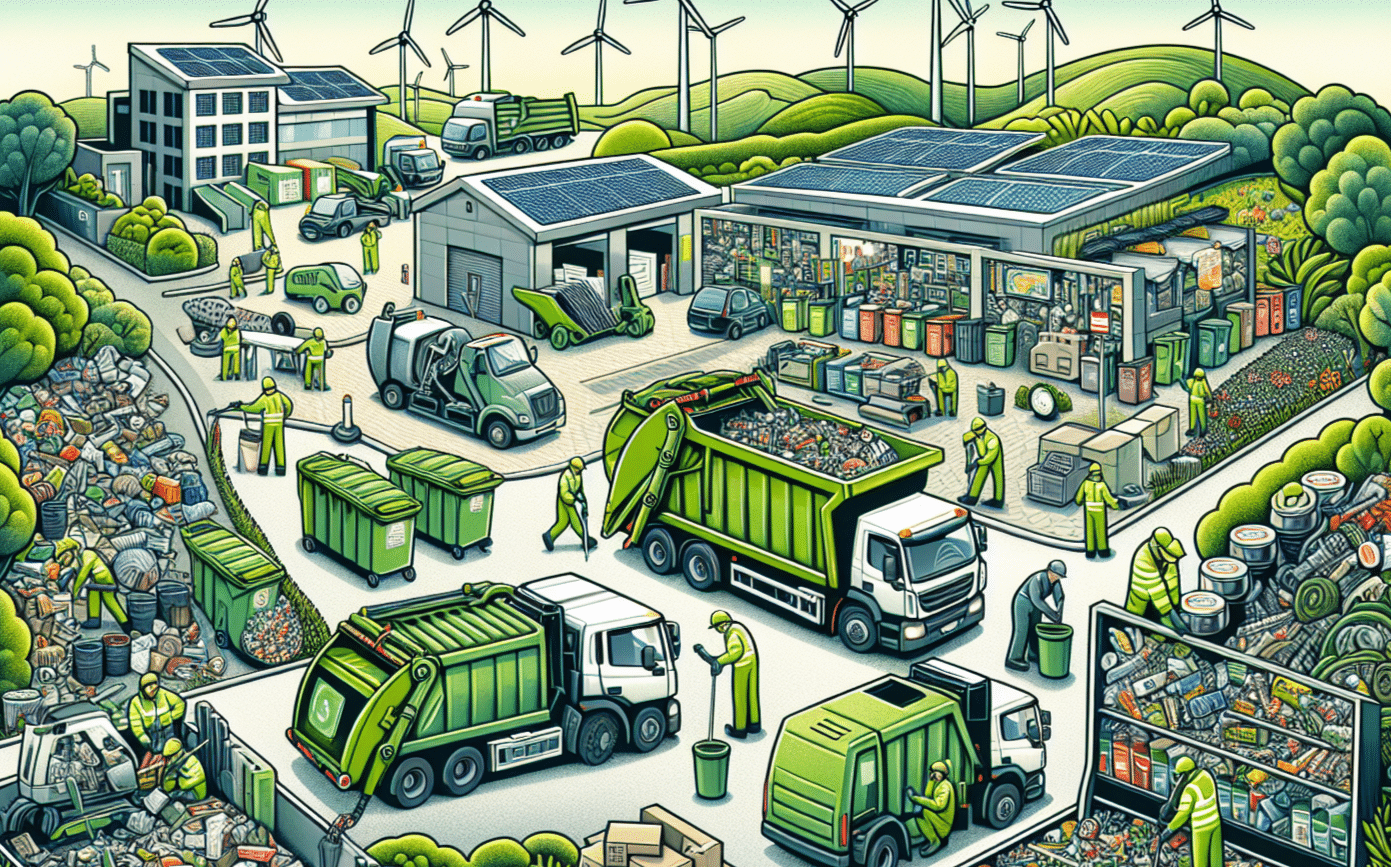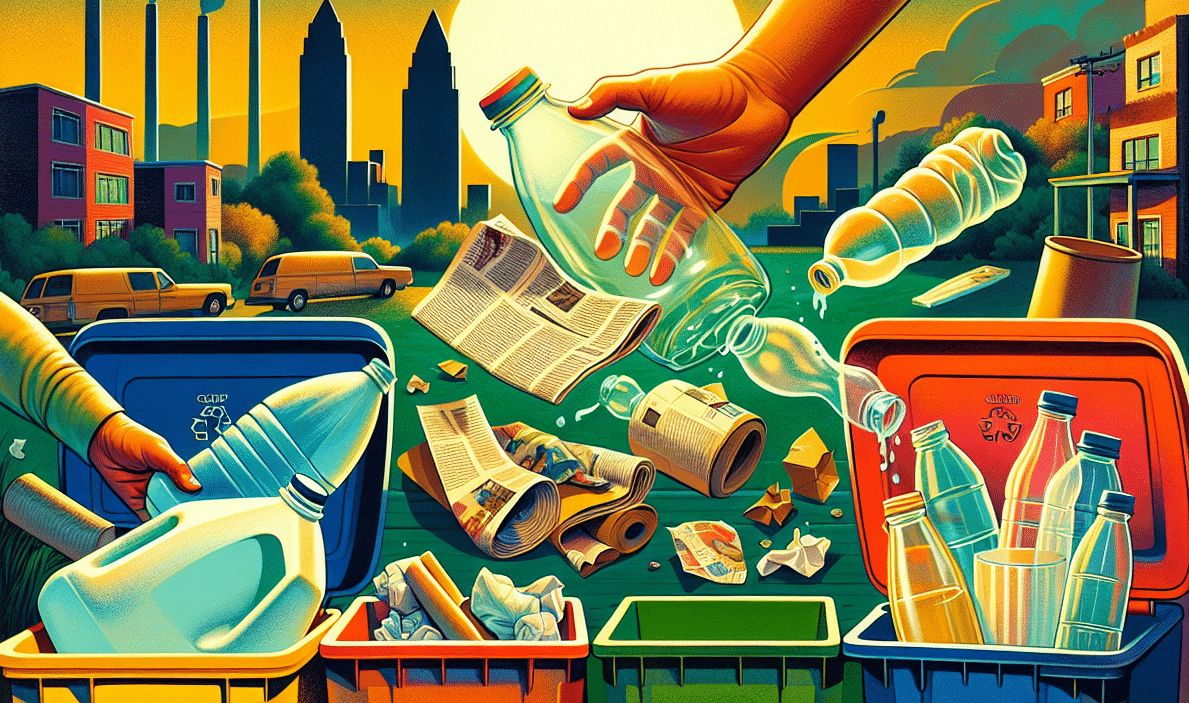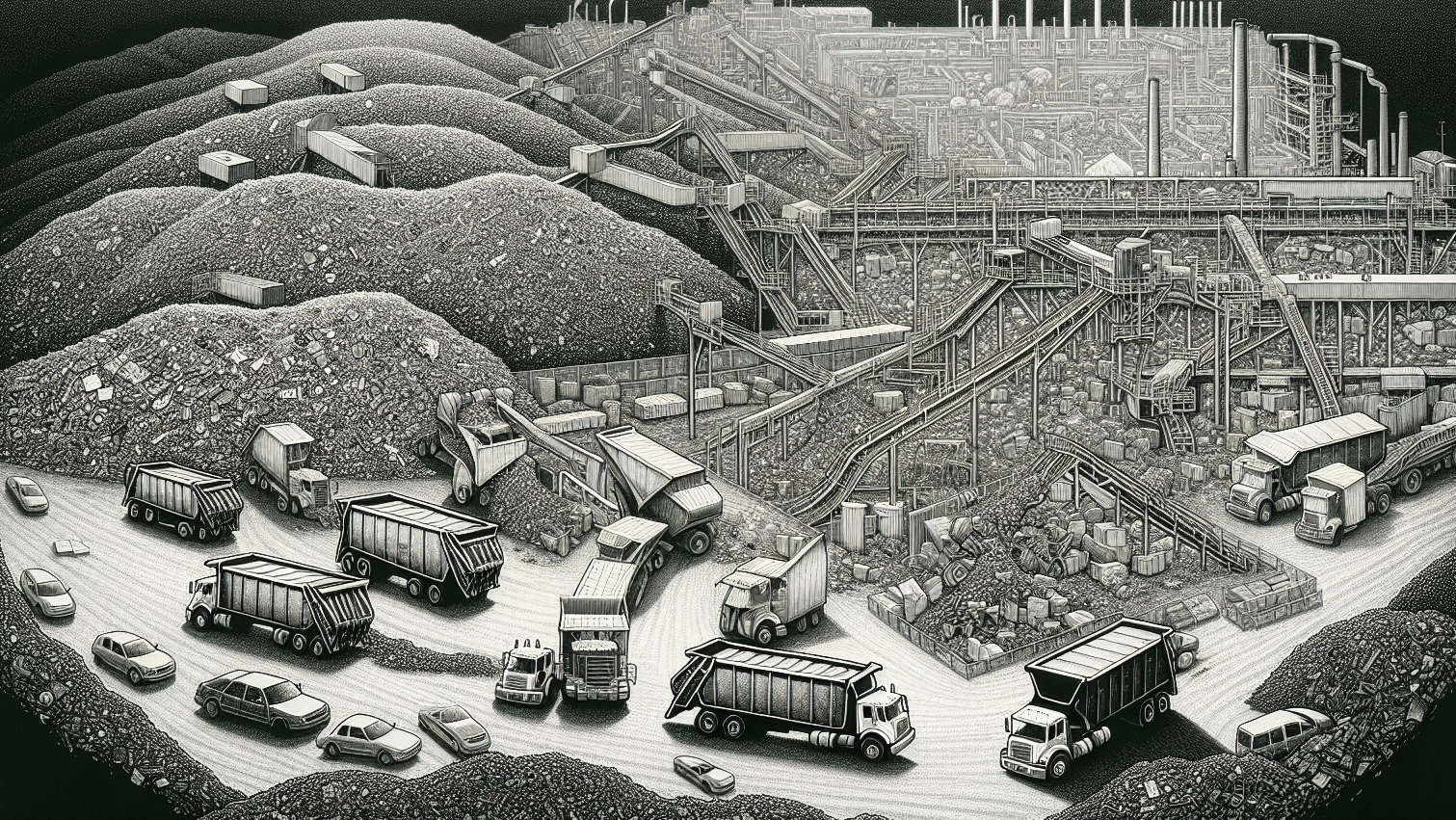Industrial wastewater treatment reduces harmful pollutants before water is released or reused. This article will guide you through effective methods and technologies for treating industrial wastewater.
Key Takeaways
- Industrial wastewater treatment is essential for environmental sustainability and public health, involving complex processes to remove contaminants from wastewater generated across various industries.
- Primary treatment methods use physical processes such as sedimentation and oil skimming to remove about 60% of suspended solids, paving the way for more advanced secondary and tertiary treatments.
- Advanced treatment technologies, including membrane filtration systems and Advanced Oxidation Processes (AOP), are crucial for handling complex and resilient contaminants, improving water purity, and facilitating the recycling and reuse of treated wastewater.
1 Understanding Industrial Wastewater
In the intricate web of modern industry, wastewater is an inevitable byproduct, yet how we manage this resource reflects our commitment to environmental stewardship and public health. Industrial wastewater management plays a crucial role in this narrative, with industrial wastewater treatment acting as the unsung hero, transforming potentially harmful effluents into treated industrial wastewater that can either safely return to nature or be reclaimed for further use. The journey to treat industrial wastewater is complex, involving a series of steps meticulously designed to strip away contaminants and clean the water. It contrasts the grim alternative: untreated wastewater, causing pollution and health hazards.
While industrial wastewater quality and volume can vary dramatically across different sectors, the imperative to treat it does not. From the heavy metals of mining operations to the organic matter from food processing, these liquid waste streams are laden with organic and inorganic matter, including substances that can be outright toxic. Industries spanning from:
- pharmaceuticals
- petrochemicals
- battery manufacturing
- the food industry
all generate wastewater that, if left untreated, can wreak havoc on ecosystems and human communities. This is why industrial wastewater treatment stands at the forefront of sustainable development, which is integral to achieving the Sustainable Development Goals that guide our global pursuit of a better world.
Common Contaminants in Industrial Wastewater
Diving into the murky depths of industrial wastewater reveals a complex concoction of pollutants. It’s a milieu where synthetic organic substances mingle with heavy metals, and non-biodegradable waste such as plastics and pesticides lurks ominously. These unwanted guests in our waterways range from:
- chromium
- mercury
- phenolic compounds
- polycyclic aromatic hydrocarbons
- hydrocarbons and sulfides from the petrochemical industry
- cadmium, nickel, and other hazardous substances from pharmaceuticals
Each industry leaves a distinct fingerprint on its effluent. The textile sector taints its wastewater with dyes and heavy metals, while the paper and pulp industry’s output is high in suspended solids and organic materials. These contaminants can be toxic, reactive, and sometimes carcinogenic, posing a formidable challenge to wastewater treatment processes and the environment if mishandled. Moreover, new materials, such as perfluoroalkyl acids used in textiles and metal plating, introduce pollutants known for their stability and potential health risks, complicating the treatment process. Thus, the ingenuity of industrial wastewater treatment lies in its ability to tackle this diversity of pollutants, ensuring that each unique cocktail of contaminants is neutralized or removed.
Primary Treatment Methods
Industrial wastewater must pass through the gauntlet of primary treatment before the intricacies of biological and chemical treatments come into play. This stage resembles sifting through a treasure chest, separating the gems from the grit. Primary treatment employs gravity and physical processes to remove materials that float or settle, using sedimentation tanks to allow suspended solids to plummet to the depths or rise to the surface. Imagine mechanical scrapers tirelessly rotating to gather the settled solids or screens shredding debris in a process known as comminution.
Removing about 60% of suspended solids, primary treatment sets the stage for the subsequent, more refined processes by eliminating more extensive materials that could otherwise damage equipment. In addition, oil skimmers deftly extract hydrocarbons from the water’s surface, ensuring that these pollutants are not carried forward. This initial phase of treatment is the unsung groundwork that makes it possible for the more nuanced and targeted secondary and tertiary treatments to perform their magic.
Secondary Treatment Processes
After the coarse filtering of primary treatment comes the delicate art of secondary treatment, where biological methods take center stage. Here, microorganisms perform a balancing act, feasting on soluble organic matter and suspended solids, transforming pollutants into less harmful substances. The secondary treatment ensures that the remaining impurities are not just hidden but truly transformed, reducing the environmental impact. We see a diverse trio of treatment types—anaerobic, aerobic, and anoxic—each playing a specialized role in purifying the wastewater.
Aerobic systems pump life-giving oxygen into the mix, energizing microbes to consume organic contaminants. Meanwhile, anaerobic treatment, devoid of oxygen, is the method of choice for high-strength waste streams, turning dense organic matter into biogas and cleaner effluent. Anoxic treatment takes on nitrogen, a common byproduct of industrial processes, using microbes to convert it into harmless nitrogen gas. Together, these biological processes form a formidable line of defense against water pollution, setting the stage for even more refined treatment approaches.
Biological Treatment Methods
In secondary treatment, biological processes are the workhorses, breaking down organic matter with the help of microorganisms. The activated sludge process is a prime example, creating a symbiotic environment where air and microorganisms collaborate to oxidize organic pollutants. This biochemical reaction results in the formation of biological flocs that settle out, further clarifying the water. Additionally, aerobic treatment processes take this further, converting organic contaminants into water, carbon dioxide, and biomass.
Surface aerators and diffusers act as the lungs of these systems, pumping oxygen into the water to maintain the aerobic conditions essential for microbial digestion. Another hero in this category is the trickling filter process, which sees wastewater cascading over a bed of media, where a microbial film breaks down the pollutants. Innovative systems like the moving bed biofilm reactor (MBBR) use plastic media to support bacterial growth, offering efficient treatment in a compact footprint.
Chemical Treatment Methods
While biology is pivotal in wastewater treatment, chemistry is its indispensable counterpart. Chemical treatment methods are precision tools targeting specific contaminants that biological processes may leave behind. These chemical maestros perform coagulation and flocculation, clumping together fine particles for easier removal. In the quest for balance, neutralization adjusts the pH of wastewater, ensuring that it’s neither too acidic nor too alkaline for safe discharge or further treatment.
Chemical precipitation is another deft move in the treatment playbook, transforming dissolved substances into solid form, making them easier to separate from the water. Ion exchange, a method often used in water softening, showcases the subtle art of swapping charged ions in the wastewater with ions attached to solid particles, removing unwanted minerals and contaminants. These chemical treatment methods refine the purification process, ensuring water meets the stringent quality standards for environmental protection and industrial reuse.
Advanced Treatment Technologies
As we forge ahead in our quest for cleaner water, advanced treatment technologies emerge as the vanguard of wastewater purification. These solutions push the boundaries of efficiency, tackling the most persistent and complex contaminants with precision and ingenuity.
For instance, ceramic membrane technology has demonstrated efficiency up to 100 times greater than traditional methods, heralding a new era in water treatment. These technologies combine physical and chemical principles to achieve remarkable purity levels, essential in an age where water scarcity and environmental regulations demand nothing less than excellence.
Amongst the arsenal of advanced treatments, pervaporation, and forward osmosis stand out for their ability to handle challenging mixtures and high-salinity waste streams. Photocatalytic oxidation harnesses the power of light-activated catalysts, such as titanium dioxide, to break down organic pollutants at the molecular level. Electrocoagulation and ultrasonic reactors apply electric currents and high-pressure microbubbles to obliterate contaminants, leaving safe and clean water behind.
These state-of-the-art technologies are reshaping the landscape of industrial wastewater treatment, creating pathways to a future where even the most polluted water can be reclaimed.
Membrane Filtration Systems
At the heart of many advanced treatment technologies lie membrane filtration systems, the gatekeepers that allow only the purest water to pass through. These systems, including ultrafiltration and reverse osmosis, are celebrated for producing high-quality water suited for the most sensitive industrial applications. Electrodialysis, a technique that harnesses electrical potential to remove ions, exemplifies the precision with which these systems operate. When water is forced through the fine pores of ultrafiltration and reverse osmosis membranes under high pressure, contaminants are left behind, delivering water of unparalleled purity.
Microfiltration and ultrafiltration specialize in barring bacteria and larger particles from trespassing, while reverse osmosis is the ultimate barrier against small particles and ions. Nanofiltration, adept at removing divalent ions and certain organics, often serves as a prelude to reverse osmosis, ensuring the water is primed for the final purification step. In pursuing Zero Liquid Discharge (ZLD), membrane technologies like reverse osmosis and electrodialysis become even more pivotal, enabling industries to treat high-salinity wastewater and recover water for reuse.
With ceramic membrane filtration, particles as small as 3 microns can be filtered out, allowing the treated water to be repurposed with confidence.
Advanced Oxidation Processes (AOP)
Advanced Oxidation Processes (AOP) offer a powerful solution when contaminants prove too stubborn for conventional treatment. These processes wield chemical reagents and free radicals like a surgeon’s scalpel, meticulously breaking down persistent organic pollutants into harmless byproducts. The transformative power of AOPs can incinerate dissolved organics within wastewater, leaving behind a cleaner, safer fluid with reduced chemical oxygen demand. Among the AOP methods, ozonation stands tall, deploying ozone as a potent oxidant to degrade complex pollutants. At the same time, photocatalytic oxidation relies on UV light to activate catalysts that generate free radicals capable of dismantling contaminants.
Photocatalysis represents a marriage of chemistry and light, where catalysts, upon exposure to light, produce reactive species that annihilate organic contaminants. These advanced oxidation techniques are particularly effective against compounds that resist biodegradation, ensuring that even the most resilient pollutants are not beyond the reach of modern wastewater treatment science.
Industry-Specific Wastewater Treatment
As diverse as the industries, wastewater treatment must be tailored to address each sector’s unique challenges and contaminants. A one-size-fits-all approach is unfeasible when dealing with the wide array of pollutants generated by different industrial activities. The smelter wastewater, for example, requires a concoction of chemical precipitation, sedimentation, and filtration to manage its metallic and organic load. The nuclear industry focuses on safely managing radioactive waste, employing specialized techniques such as biosorption to capture and contain hazardous substances. Therefore, it is crucial to implement appropriate industrial wastewater treatment methods for each specific case.
Pharmaceutical plants grapple with different challenges, dealing with a mix of solvents, spent acids, and other complex chemicals that demand customized treatment solutions. It is clear that industry-specific wastewater treatment is not merely a matter of regulatory compliance but a crucial step toward sustainable industrial practices that protect both the environment and public health.
Pulp and Paper Industry
Within the pulp and paper industry, wastewater treatment confronts an array of contaminants, including chlorinated compounds, high levels of organic matter, and colorants that can have far-reaching environmental impacts. The effluent from these mills presents a unique challenge, laden with dyes, high biochemical and chemical oxygen demands, and toxic substances that can harm aquatic life.
In response to these challenges, the pulp and paper industry harnesses a combination of primary, secondary, and tertiary treatments, each meticulously designed to remove specific pollutants and reduce the environmental impact.
Iron and Steel Industry
The iron and steel industry presents its own wastewater problem, characterized by the presence of gasification products and heavy metals that can pose a significant environmental threat. Wastewater from metalworking and other related processes is typically contaminated with heavy metals, cyanides, and a range of chemical solvents, necessitating specialized treatment processes to ensure these pollutants are thoroughly removed.
Food Processing Industry
The food processing industry generates wastewater that, while biodegradable and non-toxic, presents challenges due to high biological oxygen demand and suspended solids. This wastewater often contains:
- strong organic waste such as body fluids and blood, which are byproducts of the meat processing subsector
- oil and grease
- organic nitrogen
- ammonia
- coliform bacteria from various other food processing activities
The treatment of this wastewater must be carefully managed to handle the fluctuations in waste concentration and composition, often heightened by the seasonal nature of food production and harvesting.
Adapting to these variations requires a dynamic approach to wastewater treatment, ensuring that the systems in place can efficiently deal with the peaks and troughs of waste production. Consequently, the food processing industry frequently combines biological and chemical treatments, emphasizing flexibility and adaptability to ensure consistent compliance with environmental standards.
On-Site Wastewater Treatment Solutions
Venturing beyond the traditional centralized wastewater treatment plant, on-site wastewater treatment solutions offer a more localized and often more sustainable approach to managing industrial effluents. These systems, ranging from septic tanks to constructed wetlands, allow industries to treat their wastewater at the point of generation, reducing or eliminating the need to transport it to municipal treatment plants. Such on-site systems reduce the surcharges associated with untreated wastewater discharge and present a golden opportunity for industries to assert greater control over their environmental footprint.
Constructed wetlands, for example, serve as a natural and aesthetically pleasing method of treating wastewater, while the EPA regulates large-capacity septic systems to protect underground water sources from contamination. On-site treatment methods allow industries to integrate environmentally friendly practices into their operations, aligning with broader corporate sustainability goals and community expectations.
Recycling and Reuse of Treated Wastewater
The water cycle does not have to end with treatment; recycling and reusing treated wastewater can mark the beginning of a new, sustainable chapter. As industries seek to minimize their environmental impact, recycling treated wastewater effectively alleviates pressure on local water sources and contributes to sustainable water management practices. By reclaiming high-quality effluent from on-site treatment systems, industries can cut operational costs significantly, reducing their reliance on freshwater supplies and enhancing their sustainability credentials.
This recycled water can be repurposed in various ways, including as process water in industrial operations, for irrigation, or as coolant in thermal power plants. By embracing water recycling and reuse, industries conserve valuable resources and demonstrate a commitment to circular economy principles, where every drop of water is valued, and nothing is wasted.
Zero Liquid Discharge (ZLD) Systems
Zero Liquid Discharge (ZLD) systems represent the pinnacle of wastewater management, embodying the principle of maximum resource recovery with minimal environmental impact. These systems aim to eliminate liquid waste by treating and reusing water within industrial processes, thus achieving a closed-loop system. By integrating methods such as thermal evaporation and advanced membrane technologies, ZLD systems concentrate effluents to recover water and valuable byproducts such as salts, which can be reused or sold, turning what was once waste into an economic asset.
Despite their high efficiency and environmental benefits, ZLD systems come with considerable costs, primarily due to the energy-intensive nature of evaporative processes. However, industries increasingly recognize that the long-term benefits—including compliance with stringent wastewater discharge regulations, reduced water consumption, and minimized waste—can outweigh the initial investment. Innovations such as solar-powered evaporators are being explored to improve the energy efficiency of these systems, making ZLD a more accessible option for a broader range of industries.
Costs and Economic Considerations
When contemplating implementing industrial wastewater treatment systems, the economic implications are as varied as the technologies themselves. The cost of these systems depends on a multitude of factors, such as:
- Flow rates
- Water quality
- Target purity levels
- Choice of construction materials
For instance, systems designed to handle lower flow rates can be less costly to construct, while high levels of automation may raise initial costs but decrease the need for manual operation.
While the upfront costs can be substantial—with wastewater treatment systems for industrial applications costing anywhere from half a million to one and a half million dollars—there are ways to mitigate these expenses. Modular, prepackaged systems, for example, offer a more cost-effective and quicker deployment alternative than custom-built solutions. Furthermore, industries can achieve significant savings by recycling wastewater, thus reducing the costs associated with waste disposal and freshwater procurement.
In the case of ZLD systems, the high initial investment can be balanced by the economic benefits of water conservation and byproduct recovery.
Summary
As we reflect on the journey through the multifaceted world of industrial wastewater treatment, it becomes clear that the quest for cleaner water is both a challenge and an opportunity. From the primary processes that remove visible pollutants to the advanced technologies that purify wastewater to near-pristine levels, each step is essential in protecting our environment and health. Adopting on-site treatment solutions, recycling and reusing treated wastewater, and implementing zero liquid discharge systems all underscore the industry’s commitment to sustainability and resource conservation.
In this era where water scarcity is a growing concern, the innovations and best practices in industrial wastewater treatment are more than just regulatory obligations—they are investments in our collective future. By embracing these solutions, industries can not only meet the stringent demands for environmental protection but also contribute to a circular economy where every resource is maximized, and nothing is wasted. Let this be a call to action, inspiring industries, regulators, and communities alike to champion the cause of water stewardship and forge a path toward a cleaner, more sustainable world.
Frequently Asked Questions
What are the primary contaminants found in industrial wastewater?
The main contaminants in industrial wastewater include heavy metals, synthetic organic substances, non-biodegradable waste, organic pollutants, and toxic compounds, all of which pose significant risks to the environment and human health.
How do primary treatment methods differ from secondary treatment processes in wastewater treatment?
Primary treatment methods focus on the physical removal of solid matter, while secondary treatment processes use biological methods to remove soluble organic matter and suspended solids. Therefore, the main difference lies in removing pollutants from wastewater.
What are advanced treatment technologies in wastewater treatment, and why are they important?
Advanced treatment technologies, like membrane filtration systems and advanced oxidation processes, are essential for more efficient and effective wastewater treatment, particularly for removing persistent or complex contaminants, and are crucial for achieving high levels of purity required for specific industrial uses or environmental discharge standards.
Can treated industrial wastewater be recycled and reused?
Yes, treated industrial wastewater can be recycled and reused for various purposes, supporting sustainable water management and reducing dependency on freshwater sources.
What is Zero Liquid Discharge (ZLD), and what are its benefits?
Zero Liquid Discharge (ZLD) is a wastewater treatment method that eliminates liquid waste by recycling and reusing water within industrial processes. Its benefits include minimizing environmental impact, conserving water resources, and potentially recovering valuable byproducts for reuse or sale.







































































